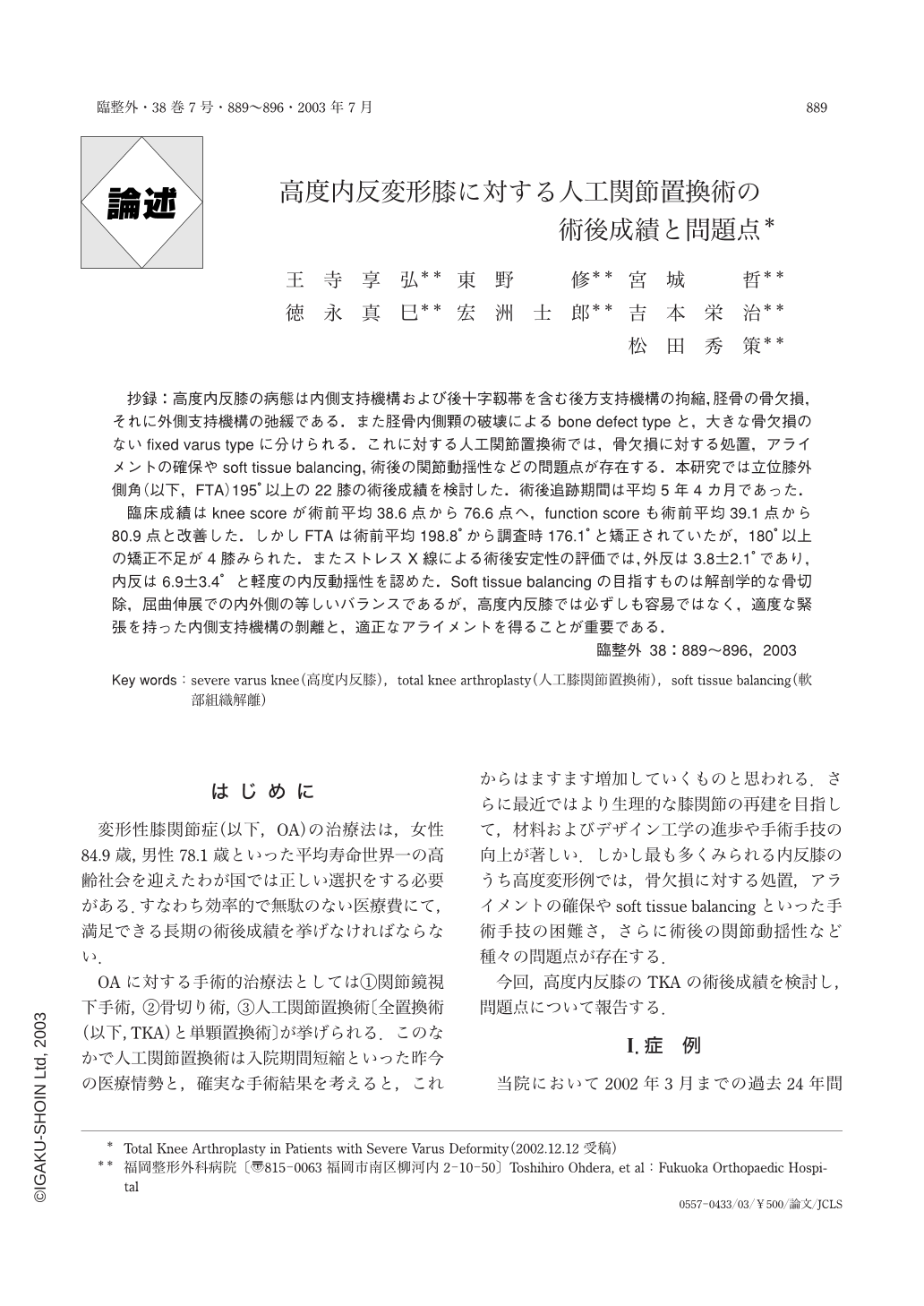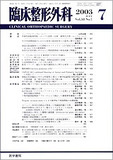Japanese
English
- 有料閲覧
- Abstract 文献概要
- 1ページ目 Look Inside
抄録:高度内反膝の病態は内側支持機構および後十字靱帯を含む後方支持機構の拘縮,けい骨の骨欠損,それに外側支持機構の弛緩である.またけい骨内側顆の破壊によるbone defect typeと,大きな骨欠損のないfixed varus typeに分けられる.これに対する人工関節置換術では,骨欠損に対する処置,アライメントの確保やsoft tissue balancing,術後の関節動揺性などの問題点が存在する.本研究では立位膝外側角(以下,FTA)195°以上の22膝の術後成績を検討した.術後追跡期間は平均5年4カ月であった.
臨床成績はknee scoreが術前平均38.6点から76.6点へ,function scoreも術前平均39.1点から80.9点と改善した.しかしFTAは術前平均198.8°から調査時176.1°と矯正されていたが,180°以上の矯正不足が4膝みられた.またストレスX線による術後安定性の評価では,外反は3.8±2.1°であり,内反は6.9±3.4°と軽度の内反動揺性を認めた.Soft tissue balancingの目指すものは解剖学的な骨切除,屈曲伸展での内外側の等しいバランスであるが,高度内反膝では必ずしも容易ではなく,適度な緊張を持った内側支持機構の剝離と,適正なアライメントを得ることが重要である.
Total knee arthroplasty (TKA) is a technically demanding procedure, and it is difficult to obtain an appropriate alignment and perfect soft tissue balancing during the operation especially in patients with severely varus aligned knee. The clinical results in 22 knees with a minimum preoperative standing femorotibial angle of 195° were evaluated. The average knee score improved from 38.6 to 76.6 points, and the average function score rose from 39.1 to 80.9 points. Although the varus deformity was corrected form 198.8±4.3° to 176.1±4.9°, it was over 180° in 4 knees at follow-up. The average varus instability was 6.9±3.4°, but it was not clinically significant. It is important to obtain good alignment and to reconstruct the medial collateral ligament with suitable tension in TKA.

Copyright © 2003, Igaku-Shoin Ltd. All rights reserved.


